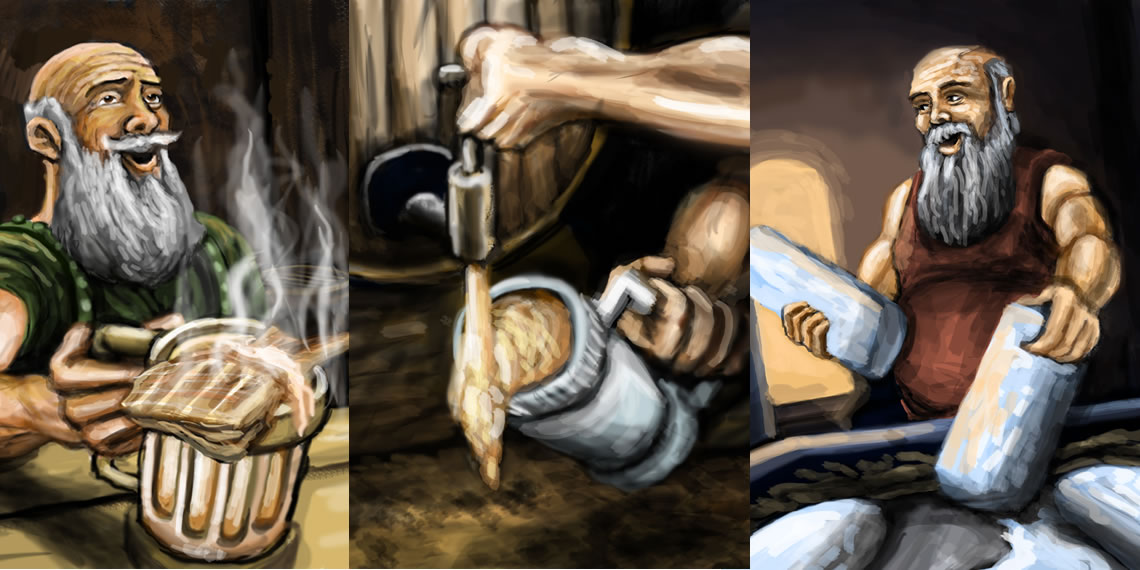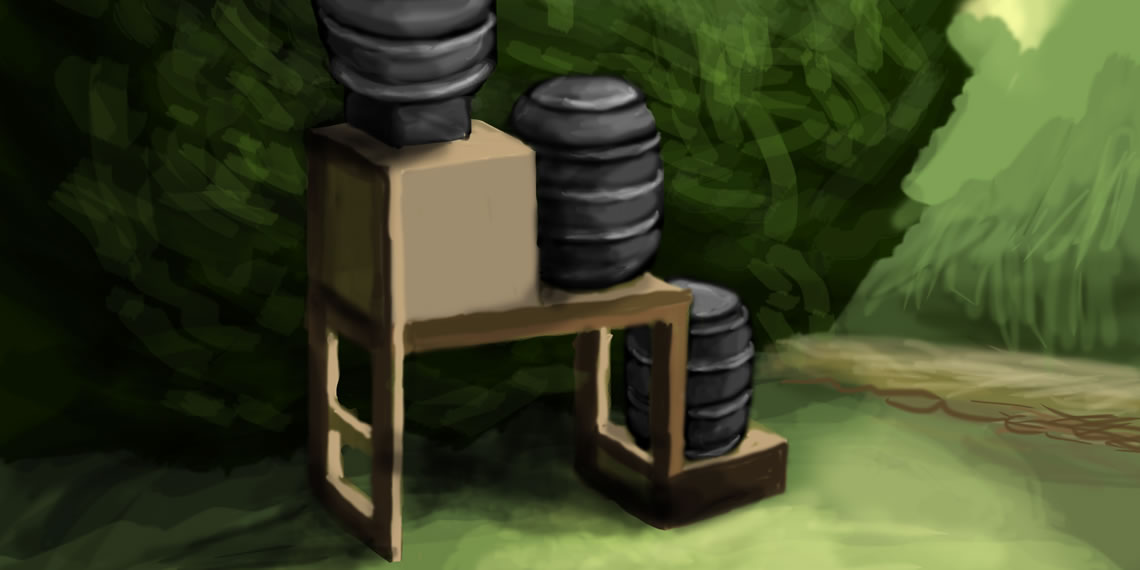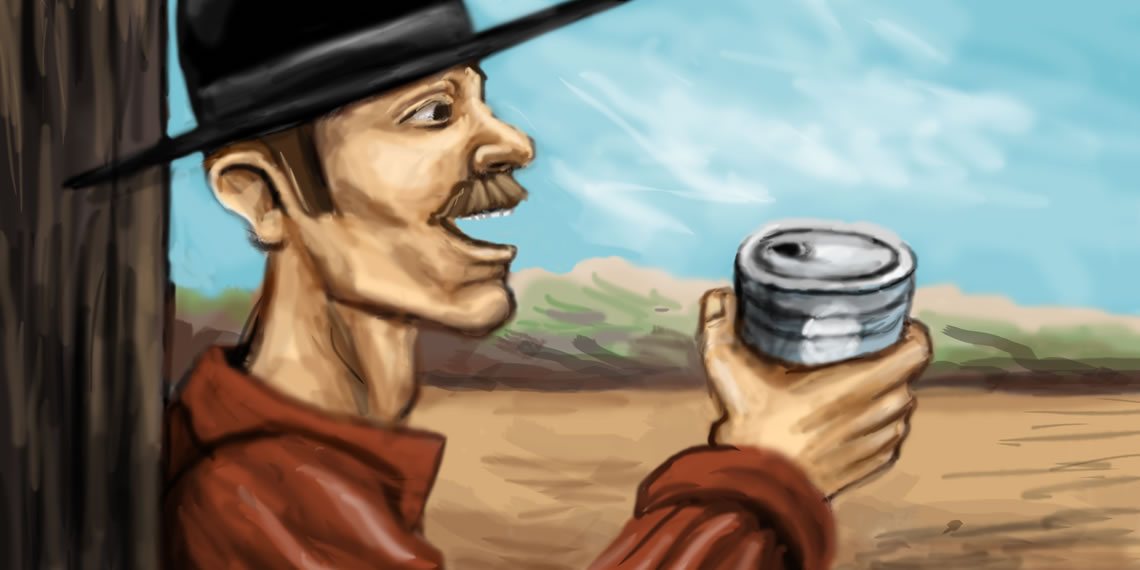Lager is a beer brewed in cool conditions using a slow-acting brewers yeast, known as a bottom-fermenting yeast, and then stored (or "lagered") for a period in cool conditions to clear away particles and certain flavor compounds to produce a clean taste. The most common examples of beer brewed using the lager method are pale or golden lagers. Pale lagers tend to be well carbonated and crisp, very clean tasting, with little or no malt character. Hop character ranges from negligible to a dry bitterness.
Lagering was a practice first surfacing in Bavaria in the early 19th centuries. Bavarians Gabriel Sedlmayr of Munich and Anton Dreher of Vienna developed the lagering technique of beer production in the 1830's, but the German immigrants of the 19th century who carried the recipes for this now common ale were likely the ones responsible for the rise and continuing popularity of this style of beer. It is widely held that Jonathan Wagner produced the first Lager made in North America in the year 1842 in a "miserable shanty on the outskirts of Philadelphia." (according to Beer, Its History and Its Economic Value as a National Beverage By F. W. Salem). The bottom fermenting yeast that he used for his lager was highly sought after - and a specimen was even stolen from him early on by his brother-in-law (who served two years for the theft). Wagner soon courted some financial backing for his product and the style of the lager grew like wildfire. The German "Beer Barons" that initiated this rush of high volume production started such famous breweries as Pabst, Anheiser-Busch, Coors, Stroh, and Schlitz.
With the rise of Lager beer came an enhanced need to serve this beer cold. Not only that, but producing Lager beer year round required a level of ice production that could not be maintained through ice-harvesting alone. It could be said that the modern era of beer brewing in North America began in the late 1800's with commercial refrigeration, automatic bottling machines, the invention of pasteurization in 1876 (first used to stabilize beer rather than milk), and railroad distribution. In fact, Adolphus Busch was among the first of the beer barons to utilize double-walled railcars and a large network of icehouses to make Budweiser the first coast-to-coast national brand of beer.
All of these factors have contributed to our modern paradigm of drinking beer cold - which brings us to the kegerator. The Kegerator is by far the most efficient way to enjoy cold beer on a regular basis. Especially for the home brewer, whose beer is not pasteurized, the kegerator is essential for maintaining the freshness of the brew. For those that are dollar wise that do not home brew, the kegerator can also save time and money! By buying in bulk, the cost of the beer you drink is reduced, and by keeping your keg in a kegerator, you save on refrigeration costs (and fridge space!), as your kegerator need not be opened except when you run out of beer!
From where did the first kegerator arise? It is likely that some of the first commercial applications of refrigeration technology was to keep beer cold, but not for drinking in the home or even at a saloon. The first draft systems came into being after the invention by Joseph Bramah and his patent of the beer engine in 1785, which involved pumping air into the beer barrel to pressurize it. This, naturally, led to contamination over time, so it is likely that beer barrels that were tapped were drunk quickly, before the beer went bad. One might imagine what the first kegerator looked like: tubes made of crude rubber or animal intestine, double wood walls insulating with straw in between, and kegs sitting atop and among blocks of ice...
 Continue to Part Three: Beer and Early Refrigeration
Continue to Part Three: Beer and Early Refrigeration
Komos
 Summit
Summit
 Beverage-Air
Beverage-Air
 DCS
DCS
 Marvel
Marvel
 Perlick
Perlick
 Bull
Bull
 Avanti
Avanti
 Danby
Danby
 CM Becker
CM Becker
 Continental
Continental
 Fagor
Fagor
 Cal Flame
Cal Flame
 Twin Eagles
Twin Eagles
 Fire Magic
Fire Magic
 GrowlerWerks
GrowlerWerks
 Hestan
Hestan
 Igloo
Igloo
 True
True
 Intertap
Intertap
 Kegco
Kegco
 Keggermeister
Keggermeister
 Koolatron
Koolatron
 KegLand
KegLand
 Krowne
Krowne
 Krups
Krups
 Lynx
Lynx
 Maxx Cold
Maxx Cold
 Micro Matic
Micro Matic
 Midea
Midea
 Nor-Lake
Nor-Lake
 Nostalgia
Nostalgia
 Arctic King
Arctic King
 Synek
Synek
 Taprite
Taprite
 Turbo Air
Turbo Air
 UBC Group
UBC Group
 Value Series
Value Series
 Versonel
Versonel
 VinoTemp
VinoTemp
 New Leaf
New Leaf





